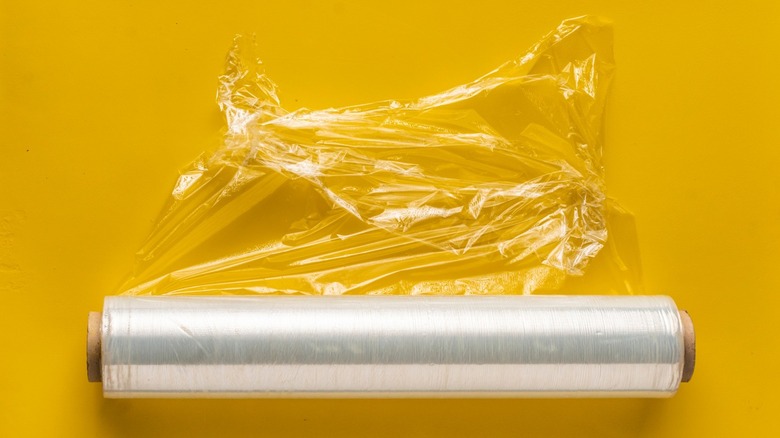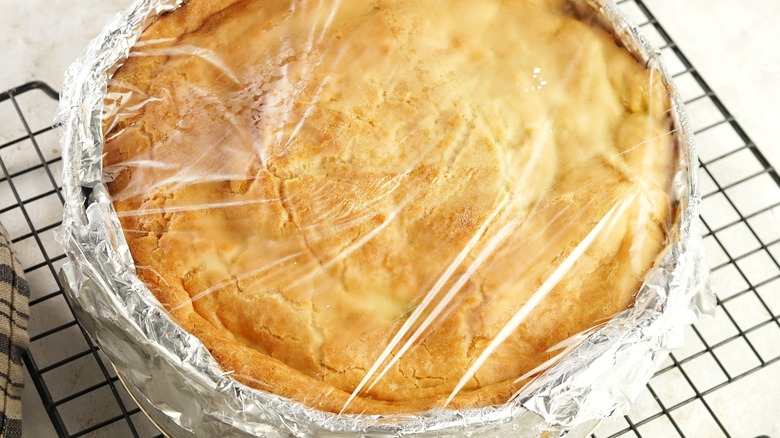The Reason You Shouldn't Put Plastic Wraps In The Oven
Anyone who worries about leaving bottled water in hot cars or wants to be sure that their reusable water bottle is made without BPA chemicals likely won't be putting plastic wrap or cling wrap in a hot oven. But for those who might want to create more steam for their dish, or have come across a recipe that calls for using plastic wrap in the oven, there might be some confusion around the safety of just that.
Per Prudent Reviews, the brands and companies that sell plastic wrap discourage customers from putting their products in the oven. While many plastic wraps shouldn't actually melt in the oven until they reach temperatures between 220 and 250 degrees Fahrenheit, there is a step taken by restaurants to ensure the food-grade plastic wrap they use won't melt. As the Charlotte Observer noted in answer to a reader's question concerning plastic wrap in the oven, this trick prevents the plastic from reaching a temperature above 212 F.
The only way you might use plastic wrap in the oven
While using plastic wrap in the oven can be very dangerous and lead to dangerous chemicals leaching into your food (via Prudent Reviews), there is one way to possibly use plastic wrap in the oven and it's the method celebrity chefs and restaurants use. According to Tree Hugger, pro chefs get by using plastic wrap in the oven by layering aluminum foil over it; this helps prevent the plastic wrap from getting so hot that it leaks those harmful chemicals.
As the Charlotte Observer explained, this setup also traps the steam, creating a wet environment, which is why this trick is used to keep food moist. The combination of the foil and the moisture is actually what keeps the plastic wrap from getting hotter than 212 degrees Fahrenheit, and thus, below the melting point.
This said, though plastic wrap can be very helpful for keeping dishes moist among other uses, it might be a practice best left to the restaurants and pros. Technically, it might be OK to use plastic wrap paired with aluminum foil at low temperatures, but for those concerned about potentially contaminating their food with the chemicals in plastics, it still might be best to avoid using it in this particular way.

